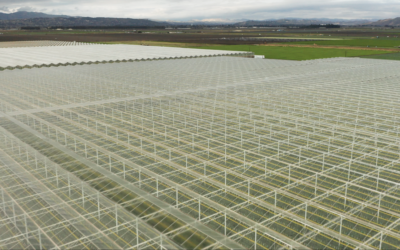Interest and investment in impact and sustainable finance have soared in recent years, highlighting a continuing shift of the field from a niche practice of do-good investors to a mainstream response to significant social problems.
The dizzying pace of development has inspired the formation of many groups with the goal of understanding the field and identifying and sharing best practices within it. They include the Global Research Alliance for Sustainable Finance and Investment (GRASFI), the Global Steering Group for Impact Investment (GSG), the Impact Management Project, the Global Impact Investing Network (GIIN), and the Impact & Sustainable Finance Faculty Consortium, where I am one of seven members of the steering committee.
Impact Investing Today and Tomorrow
For four years, our group of more than 190 professors around the world has researched, taught, questioned, and analyzed numerous issues related to impact investing and sustainable finance, from quantifying impact to understanding the role of philanthropy, financial markets, and public players. Each year, we gather this diverse faculty group at our home base at the Kellogg School of Management at Northwestern University to share our insights.
With the prominence and importance of the field reaching new heights, and with much of our collective work generating new and useful insights, we felt a need to reach out to broader community of social change leaders. With that goal in mind, we launched the Impact Investment Today and Tomorrow series in conjunction with SSIR. With this series, we aim to guide and inspire practitioners, students, enterprises, and thought leaders who share our conviction that impact investing and sustainable finance can move markets and improve human and environmental outcomes.
To kick off the series, we are taking a broad look at the field in a conversation I moderated in the spring of 2020 with five other professors in the consortium. They include three fellow steering committee members: Shawn Cole, professor of finance at Harvard Business School; Jaap Bos, chair of the finance department at the Maastricht University School of Business and Economics; and Dave Chen, adjunct professor of finance at the Kellogg School of Management at Northwestern University. You’ll also read observations from Mario La Torre, professor of sustainable finance and impact banking at “Sapienza” University of Rome, and Beatriz Mejia Asserias, a faculty member in finance, government, and international relations at Externado University of Colombia.
Given the ongoing devastation wrought by the new coronavirus and COVID-19, our discussion begins there.
Megan Kashner: At the time of our conversation, the markets have taken a hit from the COVID-19 global pandemic and the shut-downs and slow-downs it has triggered. The longer-term financial consequences are becoming an increasingly alarming concern, but are not yet fully revealed. How might this crisis—and perhaps other major disruptions like climate change—reshape the trends, size, and growth of the impact investment and sustainable finance market? Will people’s confidence in the sector be shaken? How might these potential changes differ across regions, asset classes, or other differentiators?
Jaap Bos: Clearly, we are getting a preview of what happens when we’re hit with a shock that is hard to diversify out of. I will be curious to see whether climate change debates will be different now that we have experienced this particular shock.
While I can’t say what will happen, I do know what I hope will happen. If there is anything that this pandemic reminds us of, it is the dangers of monoculture. We need healthy ecosystems everywhere. Biodiversity is essential, but it is not just limited to our natural surroundings. We need diverse business models, risk assessments, and entrepreneurial approaches. That certainly applies to impact investment and sustainable finance, where there is no such thing as a dominant design, and proof of impact is in many cases not obvious.
One of the things that the pandemic should make us reconsider is our obsession with liquidity. Quite literally, we are currently buying time. Although we are finding that this is occasionally very expensive, in many cases we may find that it is not. This matters—true impact and a more sustainable approach to finance mostly require long investment horizons and a certain willingness to be in it for the long run.
Dave Chen: COVID-19 brings physical dangers and societal disruptions—such as plunging ecosystems and supply chains into daily crises—that are or soon will infect the financial systems of many countries and regions. This crisis starkly illuminates the painful and visceral ways that economics, environment, and society are interdependent and cannot be neatly partitioned into the standard discussions and practices of impact and sustainable investment. We see now how the world can change in 30 days and mobilize in 90.
In this way, similar to Jaap’s framing of the global pandemic as a financial shock that we cannot diversify ourselves out of, I would say that COVID-19 is making the risks of climate change apparent. I believe that we will soon see a new set of business rules and strategies emerge, with emphasis on resilience, regionalism, reduction, networks, and coordination, and that this will become the new norm.
COVID brought to life what it means to live with a globally shared physical risk, and as business educators, our role has never been more important. Our students are entering a period that will see the transition from impact anecdotes to impact economics. They will see and shepherd in the scaling of impact and sustainable finance across every asset class and every investor class, from retail to institutional to universal owner (investment funds so large that they own a slice of the entire economy).
Mario La Torre: The current crisis, in theory, should naturally lead to the strengthening of impact investment and sustainable finance, but there is also a danger. The huge financial commitment that governments are putting forth to face the crisis will increase public debts, putting pressure on public finances. This leads to potential risks. A hasty use of public funds disconnected from traditional impact finance metrics could very well result in a reduction of fund availability for sustainable, mostly environmental, investments. In other words, the urgent need to finance the traditional industrial sectors affected by the crisis could result in a decrease rather than increase in financial flows to sustainability.
To avoid these risks, we can turn to the abundance of evidence in support of the profitability and risk-mitigation strengths of sustainable finance. We can also intentionally promote public-private partnerships based on a pay-for-results model. A new age of blended finance—oriented toward impact—will be the key to emerging from this emergency with strength.
Beatriz Mejia: The pandemic brings an opportunity to reshape or re-allocate investments, especially in countries that are dependent on oil and gas and will struggle with the current market shocks. Many Latin American countries are experiencing a double shock with COVID and low oil prices. These same countries, however, also trade agricultural commodities and may be better placed to withstand a global recession.
With all the tragedy the pandemic has brought, it has also shown and given people the confidence that industries and sectors are willing to reinvent themselves. This could very well increase general confidence in the market in the long run.
Companies and funds that have already started thinking of sustainable and green investments will likely use this crisis as an opportunity to accelerate a green-inclusive recovery that includes support for low-carbon, environmentally sustainable, inclusive, and resilient investments. This will of course be evident in sectors such as mobility, technology, and energy generation.
In a country like Colombia, where I live and work, issues around taxonomy and ESG (environmental, social, and governance) are a still work in progress, especially in the finance and investment sectors. As a result, the pandemic is making evident the need to incorporate social and environmental considerations even more rapidly and with long-term scenario modeling. A positive result of this global crisis could be that countries and companies will be more willing to push regulation for sustainable, green, and carbon-decreasing solutions as the new norm.
Megan Kashner: Moving on from the implications of a crisis like COVID-19, let’s discuss other aspects of impact finance’s development. Will all investment increasingly and authentically take impact into account? Will the financial sector dilute or obscure true impact investment as it expands?
Shawn Cole: My view is that we are turning a corner. The old way of doing things, in which values were ignored, is fading away. Impact and ESG considerations are now relevant for nearly every asset class. Much of this movement appears driven by investor preference, and the asset management industry is certainly adept at developing and delivering products that meet customer needs. I do not see dilution or obfuscation, but rather a growing diversity of approaches which will swell to suit the needs of nearly all investors. This is clear in both public and private markets.
In the context of public markets, for those who want to match public benchmark portfolios, there are a range of funds which apply tilts (overweightings of particular investment type) or engage with companies to promote environmental or social goals. Others may merely want screens (filtering against a set of criteria). But as the AUM (assets under management) in screened passive funds grow, so too will the incentives for firms to act to improve their ESG practices. As a result, impact investment vehicles will become acceptably investable to a growing portion of the market.
In private markets, there is a growing availability of impact funds that cater a wide array of themes, such as climate change, financial inclusion, health, women’s advancement, or clean energy. Many of these themed funds promise risk-adjusted market-rate returns. Others seek to deliver outsized impact and below-market returns. As time goes by, we will gain a better understanding of the returns, risk, and impact associated with this growing variety of investment options. This may also help mainstream investors or their advisors gain comfort with incorporating a greater share of impact assets into their portfolios.
Jaap Bos: Green-washing concerns aside, impact investing is definitely becoming more mainstream. Four things come to mind that will play a role in the speed and manner in which it becomes more widespread. First, and probably the most important in the long run, is the extent to which we have proof of impact. Independent assessments, randomized control trials, and expert judgements all help in establishing what works and what does not.
Second, many of the discussions about impact investment are still taken purely at the asset level. While that is a good start, it really only works well if we are dealing with assets for which a sustainable approach means we can do well by doing good. Otherwise, it makes much more sense to take a portfolio approach.
Third, there is a dependency on the extent to which financial services firms are able to cater to a truly heterogenous group of investors, some of whom are turning to impact investing out of preference while others are simply diversifying. Each group needs its own approach and may prefer very different products, even if they all invest within the same ESG realm.
Fourth, an often-overlooked aspect of impact finance and investment vehicles is the fiduciary duty of firms and institutional investors. As part of a much broader shift towards a stakeholder view in many jurisdictions, players who fail to act responsibly or sustainably is increasingly triggering market and legal risk.
Mario La Torre: I feel that the future will feature widespread movement of firms towards a focus and intentionality with regard to the positive impacts of their activities. Initially, at least, this will lead to more focus on environmental impact, with consideration of the social component largely restricted to workers’ welfare. In Europe, for example, this propensity for sustainability is also due to the great attention that the European Commission has given to environmental impact, leaving aside, for the most part, social and governance factors.
The risk is that this trend will result in an over-focus on environmental KPIs (key performance indicators) rather than on true assessment and measurement of true outcomes. If this were to be the case, impact investment risks settling in as the more simple and affordable option—compliance with over-simplified KPIs identified by legislation—rather than any true measure of impact.
We can see this as an optimistic scenario, if considered as a first step towards a more sustainable growth and demonstration of true impact. Financial intermediaries will play a crucial role in promoting the adoption of a true impact approach, both in legislation and in corporate practice. At the moment, we see that asset managers are one step ahead with respect to banks and institutional investors. This could stand as a positive example of the progress to come as additional players and sectors move from KPI approaches to true impact standards.
Dave Chen: I’d simply add a note about roles and imperatives at this juncture. Mario addressed the question of different players and roles showing different levels of development and sophistication in their approaches to impact finance. In fact, in every movement we can see from past examples that there are risk-takers, leaders, followers, and partygoers. As we begin to recognize both the imperative and the direction of the current fiduciary momentum, sustainability and impact are quickly becoming the norm and the expected. The center of the conversation, then, shifts from the novel and innovative to the scale and substance of impact. Some investors and fund managers will be recognized for their intentionality, others for the scale and tonnage of delivered impact. Some will be celebrated for doing both.
Once we value these differentiated roles, the question of the future of impact and sustainable finance requires an unwavering focus on the true issue: the imperative to make a difference and move the needle on the great challenges of our time.
Megan Kashner: Looking further into the future, what do you envision aiding and impeding the continuation of the recent upward trajectory in impact finance? How do you predict it will it develop?
Mario La Torre: I see a scenario in which two parallel markets would coexist. First, an ESG mass market, with financial products and firms compliant with minimum accepted standards. Second, a more niche market, with impact investments and products based on the delivery of impact or sustainability outcomes and supported by impact-oriented shareholder advocacy. The task before the sector, then, is to promote best practices within the impact-focused sector and spread, as much as possible, these practices into the mass market.
Jaap Bos: My view is similar, but focuses more on what Mario is calling a more niche market. I anticipate that because of the illiquid, long-term-focused, and innovative nature of the investments required to drive sustainability, our attention will shift away from capital markets. I predict that the types of assets we will need and want will not reside in firms listed in stock markets. Rather, they will be found outside and in creative, impact-focused opportunities. Importantly, the future of impact investing and sustainable finance will depend on the strength of our institutions. The better we price positive and negative externalities, the more rewarding sustainable business practices will be.
Beatriz Mejia: While Jaap and Mario are comparing mainstream and specialized markets and players, my field is different. In the area of global development, most of the sustainable and impact investment is pushed forward by multilateral and local development banks. Currently the financial and investment sectors have followed suit and are investing and lending into sustainable options. Also, development players like the UK and Swiss governments have been working alongside the financial sector to adjust regulations, define taxonomies, and introduce more flexibility in portfolio composition to include green projects that can access the banking and investment sectors.
From the perspective of Latin America and other developing economic regions, we need faculty and universities to increase teaching and offerings around impact and innovative finance, but we also need academia to bring clarity to defining the taxonomy of green, impact, and sustainable investment. With greater professional strength, regulatory support, shared taxonomy, and flexible portfolio management, I see a future of growth in deployment and monitoring of sustainable investment dollars in the coming years.
Shawn Cole: When we look at growth in interest in impact finance, we must not forget that it finances real activity. To see continued and significant growth, we will need an increasing number of entrepreneurs, growing businesses, and large firms that seek to achieve both financial and social and environmental goals. If such enterprises succeed, impact investing will grow rapidly. We need supply to meet growing demand.
I see no shortage of opportunities investments targeting emerging markets, as meeting the health, nutritional, and educational needs in these areas will require tremendous capital. I am somewhat less certain about whether we will see similar dramatic growth in the United States and other developed markets.
Regardless of the pace of development in impact finance across regions, awareness and interest will continue to grow. Many asset managers already take impact and sustainability very seriously. As investors and managers begin to observe that impact or sustainable finance choices do not necessarily mean sacrificing returns, the concepts and adoption will spread further. Those of us in academia are called upon to step up and publish sufficient evidence to substantiate this empirically. With growth in supply of investable enterprises, with significant evidence that impact and sustainability need not necessitate concessions on returns, and with growing investor opportunities, we will, indeed, see impact and sustainable finance become part and parcel of mainstream finance, including our academic courses and instruction in core finance.
* * *
As my colleagues have pointed out, we cannot predict with certainty what will come next. But with the insights from this series and other leaders who believe in the change-making potential of impact and sustainable investing, we can make progress toward a more just and sustainable world for all.



